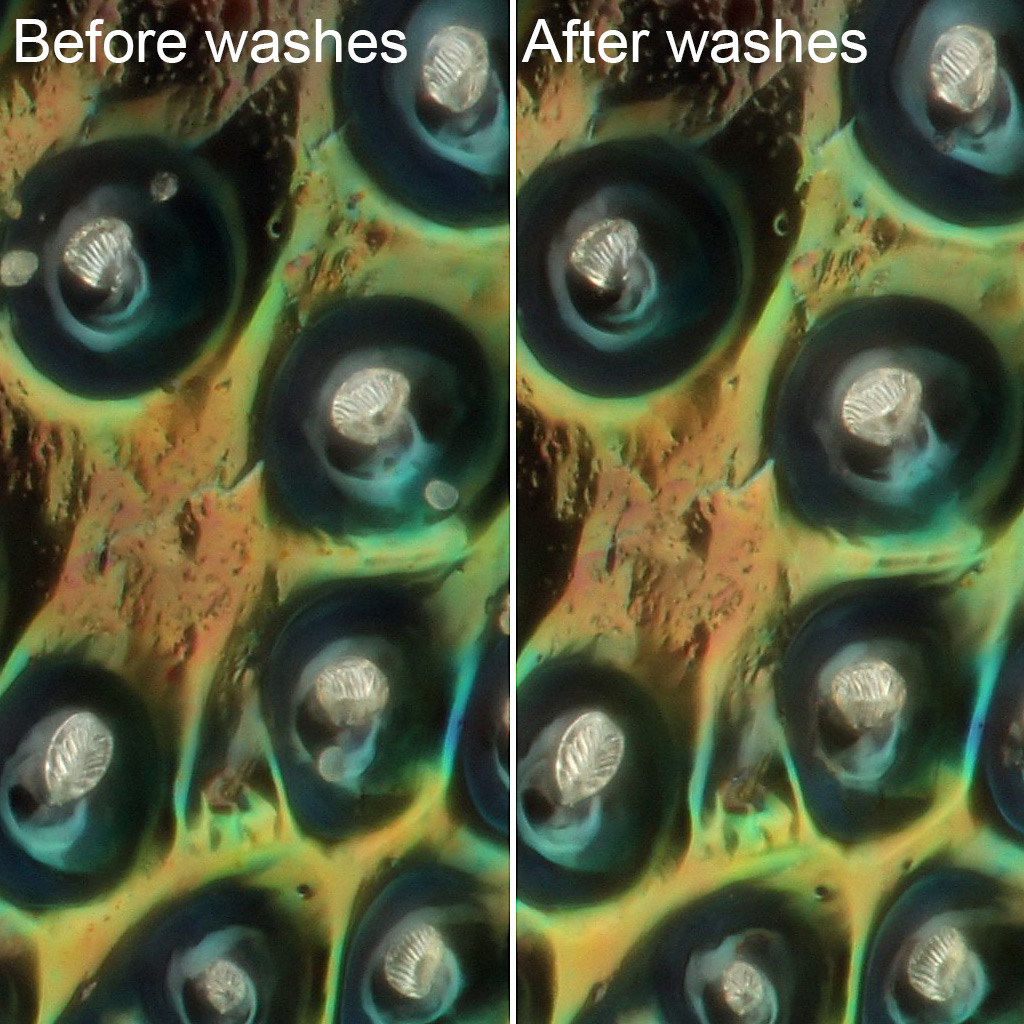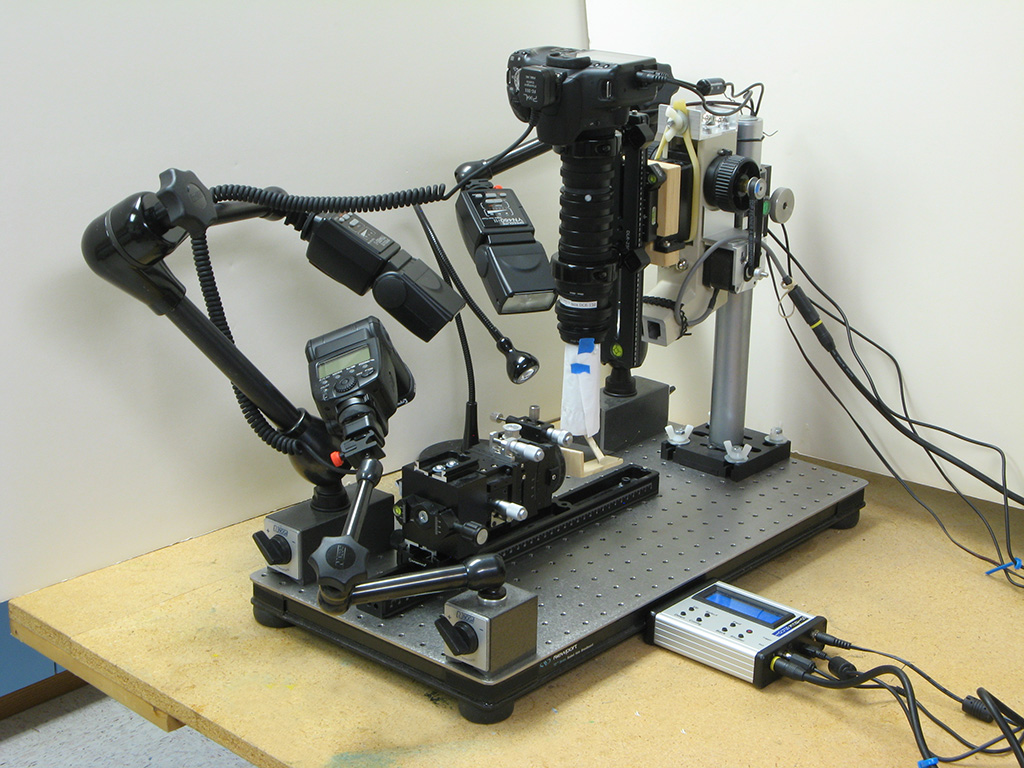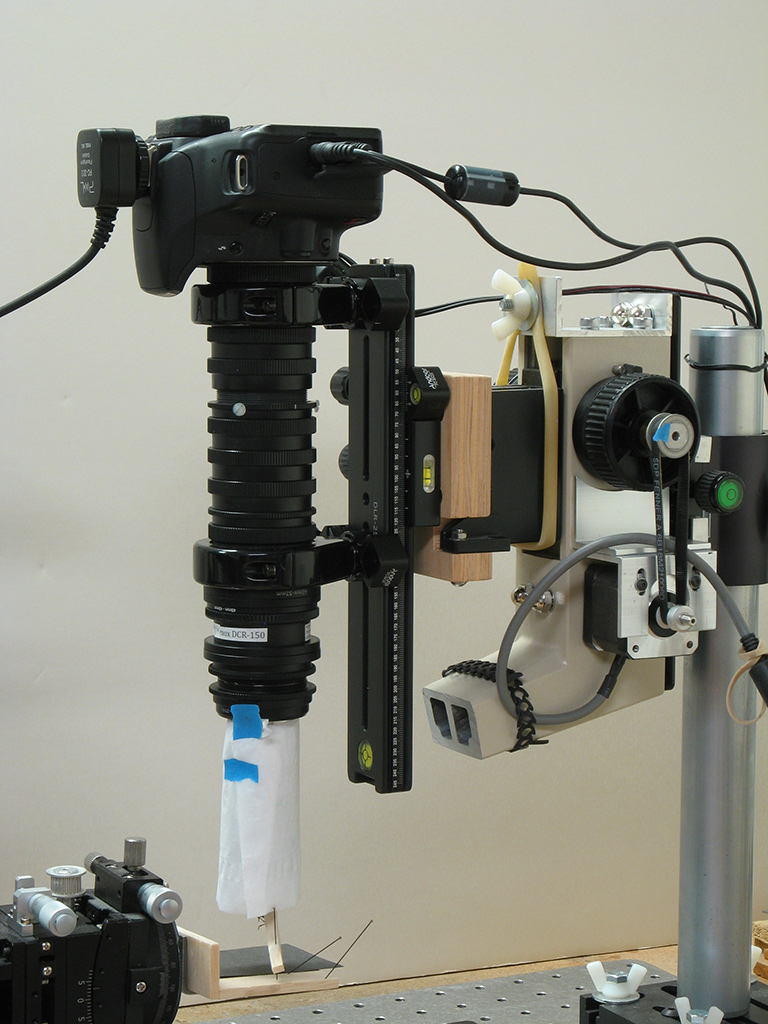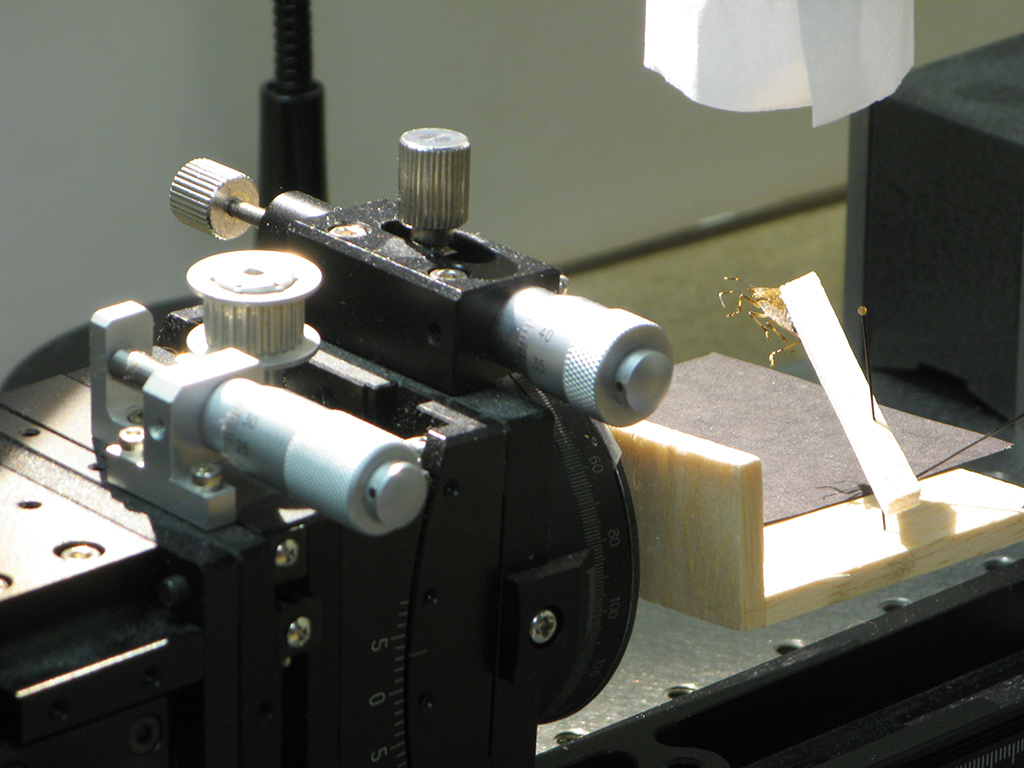I was recently at a conference where I had an opportunity to ask several entomologists if they knew, or if they knew who might know. That effort produced a few leads to other people.
One of those other people suggested to me that we might be looking at wax extruded from cuticular surface lipid pores. He sent to me a paper regarding extrusions of waxy material on the abdomen of a neuropteran.
I thought the idea that the balloons are actually wax extrusions made great sense, and in my naive enthusiasm I thought that would be easily demonstrated by simply washing away the wax using solvents. The neuropteran article described collecting the waxy material by washing the adults in hexane and/or chloroform. I don't have hexane or chloroform, but I do have a range of other solvents including xylene, acetone, and one of my favorite oil-and-grease solvents, Gumout carb & choke cleaner.
So, I plucked an old dusty BMSB (brown marmorated stink bug) from my limited collection of such things, expoxied it to a balsa stick, and photographed a few areas to make "before" pictures. Then I dripped Gumout over the specimen for a minute or so. Quick inspection through a dissection scope showed (to my surprise) that the balloons were still there, so I repeated the process with acetone and then with xylene. After a final drying, I put the bug-on-a-stick back under my camera and re-photographed one of the areas I had shot earlier.
To my complete surprise, here are the results:

As you can see, while there's less debris after the washes, there's essentially no change in visual appearance of the balloons.
I don't quite know how to take this result. I did run a quick sort of "due diligence" with the solvents, using some woolly aphids that happened to be flying this afternoon. Sure enough, the fluffy wax on their abdomens disappeared instantly when confronted with xylene and acetone. If these BMSB balloons are wax, then clearly it is some much more resistant material than the aphids are using.
Any thoughts will be most appreciated.
--Rik
Edited to add: A different article suggests dewaxing in a 50/50 mixture of xylene and isopropyl alcohol. 10- and 5-minute washes in that, with a 45-minute soak in between, had no effect either.



